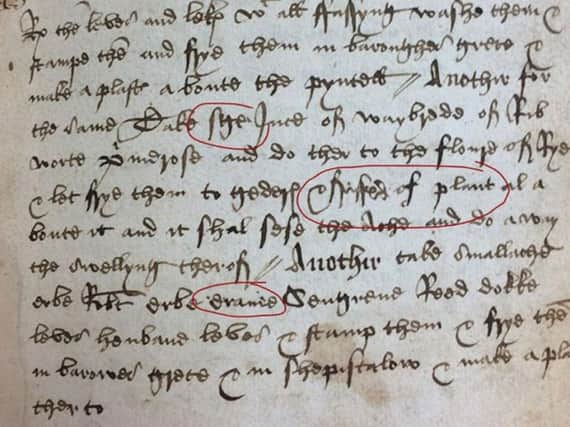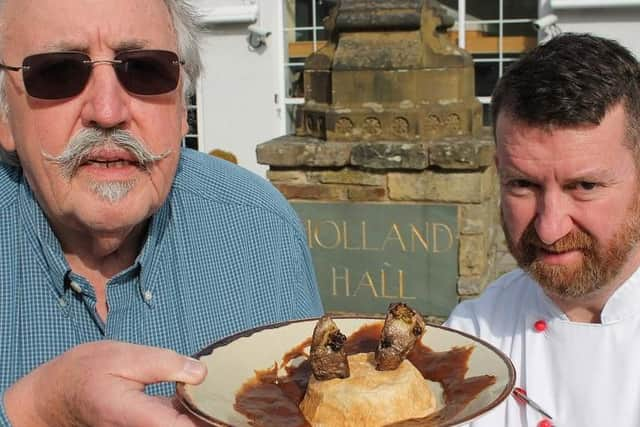Recipe found in Wigan for 400 year-old chippy tea


Chefs at Holland Hall Hotel in Up Holland have now recreated the recipe, which confirms diets were very different back in the 1600s, although its nearest modern-day cousin might be pie, chips and gravy - albeit with some ingredient twists likelier to churn the stomach than whet the appetite.
“We spoke to a historian based at Wigan’s Museum of Languages who helped us understand the recipe,” said owner Bill Kenyon.
Advertisement
Hide AdAdvertisement
Hide Ad“It’s known that the de Holland family, who had been resident in the area as far back as 1300, were both great dining hosts and often gave shelter to the senior officers of various armies, particularly in the early-mid 1600s.


“The manuscript, which we found in a bone-dry underground space, quite possibly the refrigerator of its day, refers to ‘pye’, ‘chiffed of plant’ and ‘gravie’ and it would appear that it’s a recipe for a medieval pie, chips and gravy, although not as we’d know it today.
“There were all sorts of wars and battles going on in the region in the 16th century, and it would make sense that soldiers from London chasing down dissenters in the region would have brought food and sustenance with them.
“Fifty or so years after Sir Francis Drake presented the first potato to Queen Elizabeth, it would have been likely that the military of the day would have recognised potatoes were both good for energy, and could be stored for long periods.”
Advertisement
Hide AdAdvertisement
Hide AdBy following the recipe provided in translation by Dr Horace-Pieter von Dronsberg of Wigan’s Museum of Languages, Holland Hall chefs have recreated the recipe. And it would have been belt-bustingly big.
“Basically, whatever was available would have been crammed in a big pastry case - squirrel or rat meat, game, birds - and we think the ‘chiffed of plant’ refers to chunks of potatoes cut lengthwise sticking out of the top of the pie as an hors d’oeuvre,” said Dr von Dronsberg.
“The ‘gravie’ appears to be symbolic of a moat and refers to the winners of the battles who were not delayed or stopped by moats, which were sometimes deep mud, on their way to the prize of the spoils: in this case, the prize is the food in what may symbolise a castle because of its shape. I’d guess that this could well have been one of the first-ever uses of potato in an entertainment setting.”
Mr Kenyon added: “We’re experimenting with a variety of ingredients - obviously only those which would be acceptable to customers - and likely to be holding tastings of the 16th century version of pie, chips and gravy this week.”
Mr Kenyon took over the hotel last year and has carried out major refurbishment.
This was an April Fools prank in case you didn't guess!